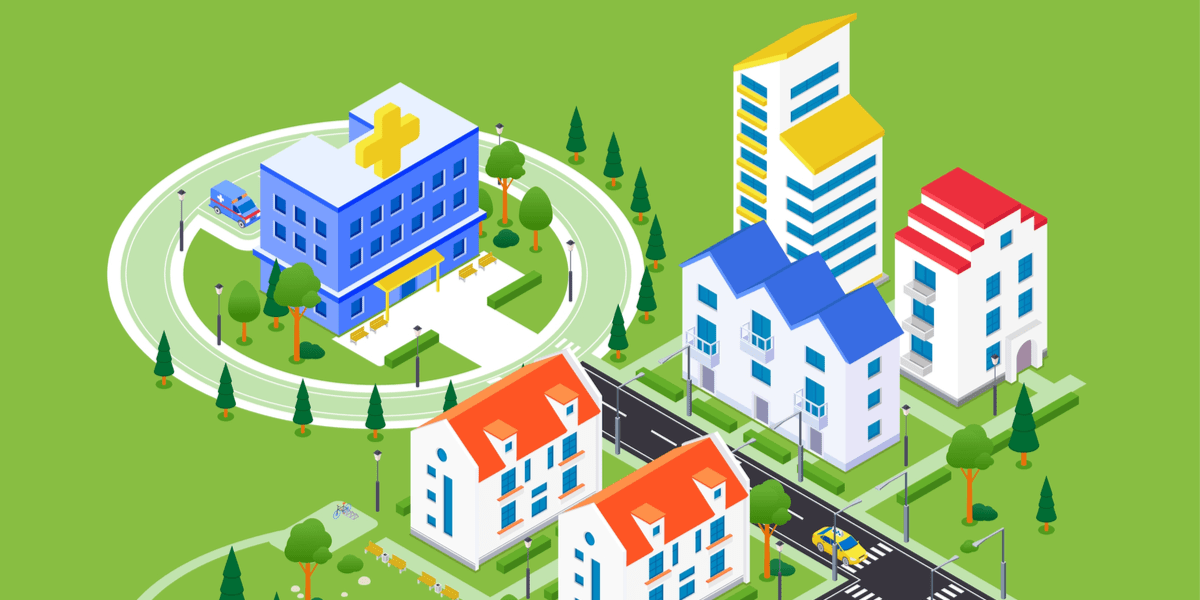
HEALTH FACILITY DESIGN AND PLANNING
Generally, healthcare facility design demands specialisation from the formulation of its needs statement, the assembly of the team, preparation and execution of masterplanning, through to the detailed design of its built facilities: to house the holistic functions that promote, protect and restore the health of the users-patients and staff as possibly can. However, different geographical areas, demography, health needs and affordability are factors that do influence how each design is approached and focused to meet the needs of the respective scenario. This webinar showcased examples from Europe, North America and Africa.
The live webinar on Health Facility Design and Planning Webinar moderated by R. Chandrashekhar to place on Monday 20 June 2022. It featured presentations from:
- Christoph Gatermann – Evolution of Recent Structures and Ideas for Future Typologies of Hospitals
- Karin Imoberdorf – Masterplanning
- Tye Farrow – Constructing Health: the elements of enriched environments
- Fiifi Sam-Awortwi – An emergency approach to the design and construction of the Ghana Infectious Disease Centre at the time of the Covid-19 pandemic.
Synopsis
Christoph Gatermann (Germany)
Evolution of Recent Structures and Ideas for Future Typologies of Hospitals
Hospitals have undergone several fundamental typological changes in the last 150 years. Originally a simple centralised collection point for all patients, this has changed fundamentally with advances in medicine, research and care. A key driver was initially the findings of hygiene, the increased awareness of infection control, new treatment and surgical methods up to the technically supported diagnosis. Only in the past 25 years has the economic aspect come to the forefront. Hospital planning will have to be measured against ever faster changing conditions. Fewer and fewer staff meet more and more patients. In addition to patient-focused design, staffing-related design will probably become a new requirement. Learning from past and present structures will enable us to develop efficient structures for the next generation of hospitals.
Karin Imoberdorf (Switzerland)
Masterplanning
Hospitals are important as they are places to heal, work and landmarks for our society. However, for these reasons they are costly. Hospitals need to function 24 hours a day, 365 days a year and constantly change. We define masterplanning as an ordered process that determines goals and aspirations in terms of the long-term development. The aim of the masterplan is to express and regulate chosen policies on accessibility and transportation, adaptability and flexibility, attractiveness and competitiveness, integration of innovation and durability aspects. These comprehensive plans typically encompass large geographical areas, a broad range of topics and cover a long-term time horizon. They must be open enough to allow reactions to new developments. Different models will be shown, compared and discussed.
Tye Farrow (Canada)
Constructing Health: the elements of enriched environments
We are living in what has been described as the ‘golden age’ of neuroscience research, which is leading to innovative ideas about how to create healthy post-covid hospitals and the role our built environment plays in this equation for those that heal and work in these environments. This lecture will look at the cross-fertilising knowledge between design and brain science which can lead to the conditions in which patients and staff can flourish, not merely survive, in our hospitals. It will draw on example of the firm’s hospital designs in Canada, Europe and Israel.
Fiifi Sam-Awortwi (Ghana)
An emergency approach to the design and construction of the Ghana infectious disease centre in the time of the COVID-19 pandemic.
Infectious disease centre design can be perceived as a ‘corner of hope` within the broader body of health care design with the objective of creating environments that restore good health and prevent the spread of infectious health conditions. Prior to the outbreak of the Covid-19 pandemic, the Ghanian government was embarking on its regular development of health infrastructure. This status quo was however broken by the pandemic, which sent the government in search for the best ways to contain and manage the virus as it ravaged through epicentres in parts of Asia and Europe at the time. This presentation highlights the rapid process of events: research, the design process, working teams, construction processes and lessons learnt as we continuously contribute to a safer and healthier environment.